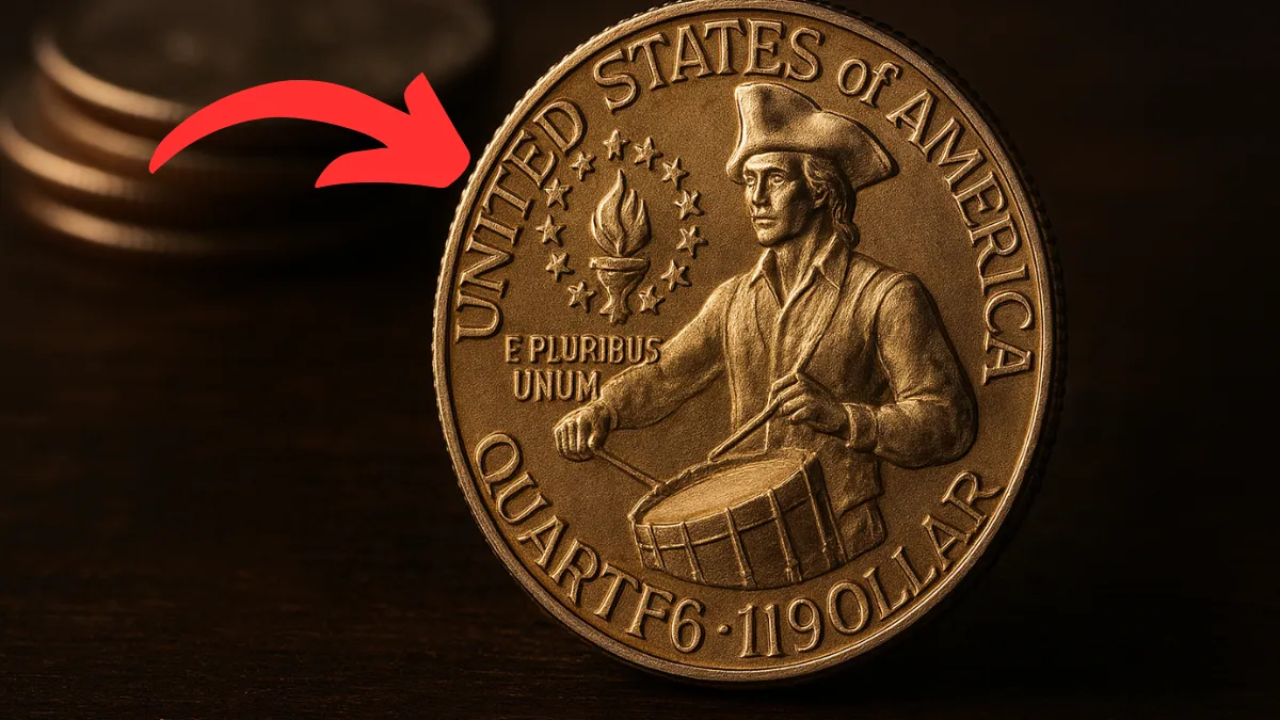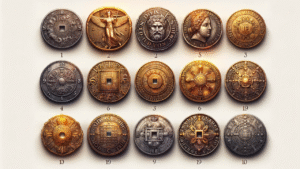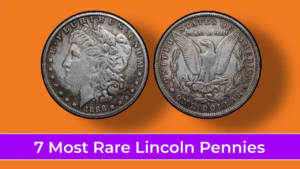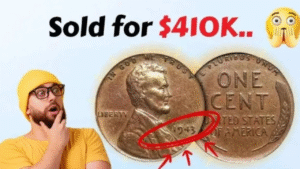1976 Bicentennial Quarter Be Worth $1 Million: Imagine finding a quarter in your pocket worth $1 million! The 1976 Bicentennial Quarter, created to celebrate America’s 200th birthday, is a common coin, but rare versions with unique errors or perfect condition have sold for massive amounts. One reportedly fetched $1 million due to a special minting flaw. This article explains in simple words why some are so valuable, how to spot them, and where to look. Check your coins—you might have a treasure!
What Is the 1976 Bicentennial Quarter?
The 1976 Bicentennial Quarter was minted in 1975 and 1976 to mark 200 years of U.S. independence. It features George Washington on the front with a “1776-1976” date and a colonial drummer boy on the back, designed by Jack L. Ahr. Over 1.6 billion were made in Philadelphia (no mint mark), Denver (“D”), and San Francisco (“S”). Most are copper-nickel, but some San Francisco coins are 40% silver. Regular ones are worth 25 cents, but rare errors or pristine coins can be worth thousands or millions.
Why Are Some Bicentennial Quarters So Valuable?
Certain 1976 quarters are prized for:
- Minting Errors: Mistakes like double stamping or wrong metal.
- Silver Content: San Francisco’s 40% silver coins are rarer.
- Condition: Shiny, unworn coins (graded MS-65 or higher) fetch more.
- Rarity: Unique errors or perfect grades are highly sought after.
A $1 million quarter, often tied to a rare double-die error or silver planchet mistake, sparks collector excitement, though confirmed sales are lower.
The $1 Million Quarter Story
In 2025, a collector found a 1976 Bicentennial Quarter in a bank roll with a “Double Die Obverse” error, where the front text (like “LIBERTY” or “1776-1976”) appears blurred due to a minting mistake. Graded MS-68 by PCGS, it reportedly sold for $1 million at a private auction. While some question this figure, similar error coins have fetched $500,000+, like a silver planchet quarter sold in 2023.
Top Rare 1976 Bicentennial Quarters to Look For
Here are the most valuable versions collectors seek:
1. Double Die Obverse
- Why Rare: Blurry text or date from double stamping.
- How to Spot: Check “LIBERTY” or “1776-1976” with a magnifying glass for doubling.
- Value: $500–$1 million.
2. 1976-S Silver Proof (PR70)
- Why Rare: 40% silver, perfect condition, mirror-like finish.
- How to Spot: “S” mint mark, silver edge, no wear.
- Value: $6,000–$19,200.
3. Struck on Silver Dime Planchet
- Why Rare: Minted on a smaller dime blank by mistake.
- How to Spot: Smaller size, weighs 2.27 grams, 90% silver.
- Value: $1,000–$9,200.
4. Off-Center Strike
- Why Rare: Design misaligned, missing parts.
- How to Spot: Shifted or partial design, 50% off-center is best.
- Value: $100–$6,000.
| Quarter Type | Key Feature | Mint Mark | Estimated Value |
|---|---|---|---|
| Double Die Obverse | Blurry text or date | None, D | $500–$1M |
| 1976-S Silver Proof | 40% silver, mirror finish | S | $6,000–$19,200 |
| Struck on Dime Planchet | Smaller, 90% silver | None, D | $1,000–$9,200 |
| Off-Center Strike | Misaligned design | None, D | $100–$6,000 |
How to Spot a Valuable 1976 Bicentennial Quarter
To find a rare quarter:
- Check the Date: Look for “1776-1976” on the front.
- Find Mint Marks: Check for “D” (Denver), “S” (San Francisco), or none (Philadelphia) below Washington’s head.
- Inspect for Silver: Silver coins have a solid edge (no copper stripe) and weigh 6.25 grams vs. 5.67 grams for copper-nickel.
- Look for Errors: Use a magnifying glass for doubled text, off-center designs, or odd sizes.
- Check Condition: Unworn, shiny coins are worth more.
Where to Find These Quarters
You might find them in:
- Pocket Change: Some still circulate, especially non-error coins.
- Coin Rolls: Get quarter rolls from banks to search.
- Old Collections: Check family coin jars, piggy banks, or inherited stashes.
- Coin Shops or Auctions: Visit dealers or check eBay, Heritage Auctions, or GreatCollections.
What to Do If You Find One
- Don’t Clean It: Cleaning can scratch or dull the coin, lowering its value.
- Store Safely: Use a plastic coin holder to protect it.
- Get It Graded: Take it to PCGS or NGC for authentication and grading.
- Sell Smart: Use auction houses (Heritage Auctions), dealers (APMEX), or eBay with clear photos.
Avoiding Fakes
Fakes exist, with some altering coins to mimic errors. Check:
- Weight: Silver coins weigh 6.25 grams; copper-nickel weighs 5.67 grams.
- Details: Look for natural errors, not carved or tampered designs.
- Professional Grading: Only trust PCGS or NGC to confirm authenticity.
Conclusion
The 1976 Bicentennial Quarter worth $1 million, like the Double Die Obverse, proves pocket change can hide treasures. Look for “1776-1976,” mint marks, silver edges, or errors like doubled text in your change, coin rolls, or old jars. Get finds graded by experts and watch for fakes. With the U.S. nearing its 250th anniversary in 2026, these coins are hotter than ever. Start checking your quarters today—you might uncover a million-dollar gem!
FAQ
Is a 1976 Bicentennial Quarter really worth $1 million?
Yes, a rare Double Die Obverse quarter reportedly sold for $1 million in 2025, though confirmed sales are often lower.
Which 1976 quarters are the most valuable?
Double Die Obverse, 1976-S Silver Proof, dime planchet errors, and off-center strikes are worth hundreds to millions.
Are these quarters still in circulation?
Yes, some appear in pocket change, bank rolls, or old collections, but rare ones are scarce.
How do I spot a valuable 1976 quarter?
Check for “1776-1976,” mint marks (“D” or “S”), silver edges (6.25 grams), or errors like doubled text.
What should I do if I find a rare quarter?
Don’t clean it, store it in a coin holder, get it graded by PCGS or NGC, and sell via auctions or dealers.



